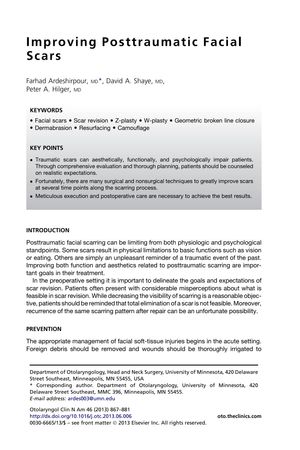Improving Posttraumatic Facial Scars
September 2013
in “
Otolaryngologic Clinics of North America
”

TLDR The document concludes that improving the appearance of posttraumatic facial scars is possible with careful treatment and realistic expectations.
The document from 2013 outlines the challenges in treating posttraumatic facial scars and various methods to improve their appearance, though not eliminate them entirely. It emphasizes realistic patient expectations, proper wound care, and postoperative management. Treatments discussed include surgical techniques like Z-plasty and W-plasty for reorienting and camouflaging scars, resurfacing methods such as chemical peels, dermabrasion, and laser resurfacing, and the use of tissue expanders for larger scars. It also covers the management of potential complications such as flap compromise, alopecia, hyperpigmentation, telangiectasia, and hypopigmentation, highlighting the need for careful execution to minimize additional trauma, particularly to hair follicles. The document stresses preoperative planning and patient education as crucial for achieving the best outcomes in scar treatment.
